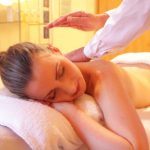 PMS, or premenstrual syndrome, is a combination of physical and emotional symptoms that many women experience in the week prior to menstruation. These symptoms often include headache, fluid retention, cramping, back pain, breast tenderness, constipation, and fatigue and can be very troubling.
PMS, or premenstrual syndrome, is a combination of physical and emotional symptoms that many women experience in the week prior to menstruation. These symptoms often include headache, fluid retention, cramping, back pain, breast tenderness, constipation, and fatigue and can be very troubling.
PMS is extremely common, effecting 8 out of 10 women at some point during their lives. Studies have shown that 75 percent of women who suffer from PMS have never treated their symptoms and women who suffer the most severe symptoms were the least likely to seek help. Although common, PMS does not have to be a painful and debilitating monthly occurrence.
Research studies have shown that women who suffer premenstrual symptoms may benefit from massage therapy. These benefits include less cramping and pain in the abdomen, less fluid retention, and less pain during the subsequent menstrual period. Research participants who received massage therapy also demonstrated fewer symptoms of anxiety and depression after massage.
A full body massage that includes a light abdominal massage and trigger point therapy can be very beneficial. Massage reduces water retention as well as stress and is a good way to relax. Trigger point therapy is a developing area of massage and focuses on myofascial trigger points that may be involved in the body’s pain response. Trigger points in the Adductor magnus muscle, which lies deep within the upper thighs, is thought to be connected to pelvic pain and cramping associated with PMS. Clients should ask their massage therapist if they are familiar with trigger point therapy.
Self -Massage Technique
Some women may prefer to care for their PMS pain on their own or ask their partner to help with an abdominal massage. This can be done by rubbing your stomach in a clockwise motion from the lower ribcage (about 2 inches below the navel) and then back up toward the middle of the lower ribcage. Repeat this ten times, or less if this grows uncomfortable.
Massage with both hands down the length of the lower torso to the pelvic region, massage outward towards the hips and groin. Repeat this movement five times.
Finally, move your hand to the center of your upper leg and move upwards towards the navel. Repeat five times, then switch to the other leg and repeat.
Other self-care techniques exist, such as being mindful of the days of the month when symptoms may be more likely to occur. PMS sufferers can also cut back on caffeine and alcohol intake to reduce bloating, exercise to help with cramps, and practice stress reduction techniques.
Contact us today if we can help!